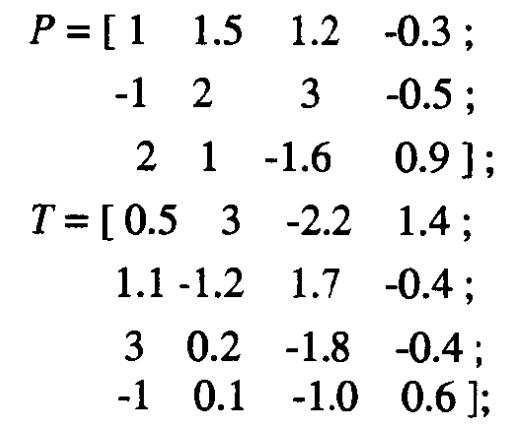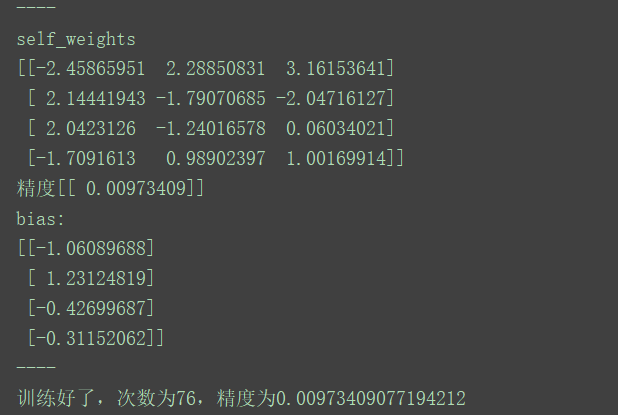三个输入,四个输出,四组数据

对numpy和矩阵运算还不是太熟悉,可能写的复杂了点,矩阵数组来回转换
import numpy as np
def acti_fun(x):
return x
# error = labels - output
rate = 0.1
input_vecs = np.mat([[1, -1, 2], [1.5, 2, 1], [1.2, 3, -1.6], [-0.3, -0.5, 0.9]])
labels = np.mat([[0.5, 1.1, 3, -1], [3, -1.2, 0.2, 0.1], [-2.2, 1.7, -1.8, -1.0], [1.4, -0.4, -0.4, 0.6]])
n_x = input_vecs.shape[1]
n_h = labels.shape[1]
class P:
def __init__(self):
# self.weights = np.random.random()
self.weights = np.arange(n_h * n_x).reshape(n_h, n_x)
self.bias = [[0], [0], [0], [0]]
# 定义训练函数,包括训练次数count,学习率rate
def train(self, input_vecs, labels, count):
for i in range(count):
#精度d,平方差和
d = 0
for input_vec, label in zip(input_vecs, labels):
input_vec = np.mat(input_vec)
label = np.array(label).T
label = np.mat(label)
input_vec = np.array(input_vec).T
output = acti_fun(np.dot(self.weights, input_vec) + self.bias)
input_vec = np.array(input_vec).T
input_vec = np.mat(input_vec)
print('self_weights\n%s' % self.weights)
error = label - output
a = 0
for j in error:
a = np.dot(j, j)
d += a
print('精度%s' % d)
print('bias:\n%s' % self.bias)
self.bias += rate * error
a = acti_fun(np.dot(error, input_vec))
self.weights = a * 0.1 + self.weights
print('----')
if d < 0.01:
print('训练好了,次数为%s,精度为%s' % (i, float(d)))
break
p = P()
p.train(input_vecs, labels, 100)
运行结果片段
